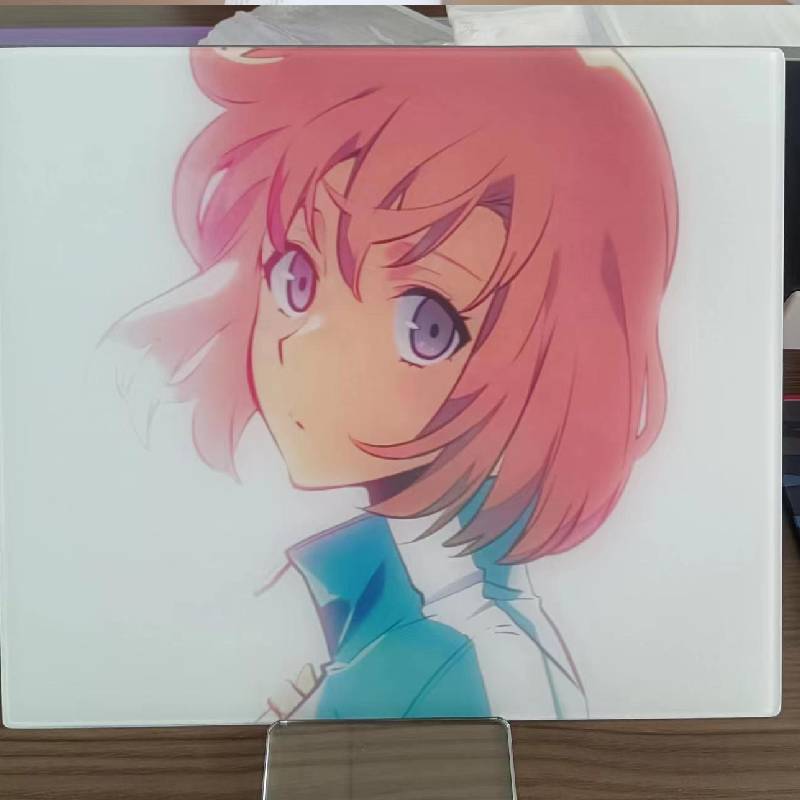Cost of Mirror Glass Understanding Factors and Market Trends
Mirror glass is an essential component in various industries, ranging from construction and automotive to fashion and interior design. It serves both functional and aesthetic purposes, creating a reflection that enhances spaces while also allowing for visibility and light manipulation. As industries evolve, so does the demand for high-quality mirror glass, which consequently impacts its cost. This article aims to explore the factors influencing the cost of mirror glass, current market trends, and potential future developments in this sector.
Factors Influencing the Cost of Mirror Glass
1. Materials Used The primary component of mirror glass is the glass base, often made from soda-lime glass, borosilicate glass, or other specialized types. The quality of the glass influences its durability and clarity, making high-quality glass more expensive. Additionally, reflective coatings—usually composed of silver, aluminum, or other metals—significantly impact cost. Silver-coated mirrors tend to be pricier due to the higher cost of silver compared to aluminum.
2. Manufacturing Process The production of mirror glass involves several steps, including cutting, polishing, coating, and quality testing. Each of these processes requires specific machinery and skilled labor, which contributes to the overall cost. Advanced manufacturing techniques, like vacuum deposition for coatings, enhance efficiency and quality but can raise expenses considerably.
3. Size and Thickness The dimensions of the mirror glass play a crucial role in determining its price. Larger and thicker mirror glass panels require more raw materials and can increase manufacturing and shipping costs. Custom sizes and shapes also tend to be more expensive, reflecting the additional labor and precision required in their production.
4. Finishes and Features Specialty finishes, such as anti-fog, anti-scratch, or tempered glass, can significantly raise the cost of mirror glass. These features enhance the longevity and performance of the mirrors but come at a premium. For instance, tempered mirrors undergo a heating and cooling process that increases strength but also raises production costs.
5. Market Demand and Supply The demand for mirror glass varies by industry. Trends in interior design, rising construction activities, and the automotive sector's growth contribute to fluctuating prices. Economic factors, such as tariffs on raw materials and supply chain disruptions, can also lead to price volatility. The COVID-19 pandemic, for example, caused significant disruptions and changes in demand patterns, impacting costs across multiple sectors.
cost of mirror glass
Current Market Trends
Currently, the mirror glass market is witnessing several trends that are shaping its cost structure. The growing emphasis on energy efficiency and sustainable design is leading to increased demand for eco-friendly mirror glass products. Manufacturers are investing in technologies that reduce waste and utilize recycled materials. Although these sustainable options may initially have a higher upfront cost, they reflect the evolving consumer preferences towards products that minimize environmental impact.
Moreover, the rise of smart home technology is influencing the functionality of mirror glass. Smart mirrors equipped with LED displays and touch interfaces are becoming increasingly popular. These high-tech products typically command higher prices due to the sophisticated technology involved, illustrating a market trend where functionality and innovation drive costs.
Future Developments
Looking ahead, innovations in materials science, such as the development of lighter and more durable composite materials, could lead to changes in mirror glass pricing. As production techniques become more automated and efficient, manufacturers may be able to reduce costs without sacrificing quality.
Furthermore, as global awareness regarding environmental sustainability increases, the market may see a shift towards recycled and recyclable mirror glass products. Although these may entail higher production costs initially, they could become more economically viable as technologies advance and public demand increases.
Conclusion
In summary, the cost of mirror glass is influenced by a multitude of factors, including materials, manufacturing processes, size, finishes, and market dynamics. As industries adapt and evolve, the market for mirror glass will continue to experience changes driven by consumer demands and technological advancements. Understanding these elements is crucial for manufacturers, suppliers, and consumers alike as they navigate the complexities of pricing in this vibrant sector.
 Afrikaans
Afrikaans  Albanian
Albanian  Amharic
Amharic  Arabic
Arabic  Armenian
Armenian  Azerbaijani
Azerbaijani  Basque
Basque  Belarusian
Belarusian  Bengali
Bengali  Bosnian
Bosnian  Bulgarian
Bulgarian  Catalan
Catalan  Cebuano
Cebuano  Corsican
Corsican  Croatian
Croatian  Czech
Czech  Danish
Danish  Dutch
Dutch  English
English  Esperanto
Esperanto  Estonian
Estonian  Finnish
Finnish  French
French  Frisian
Frisian  Galician
Galician  Georgian
Georgian  German
German  Greek
Greek  Gujarati
Gujarati  Haitian Creole
Haitian Creole  hausa
hausa  hawaiian
hawaiian  Hebrew
Hebrew  Hindi
Hindi  Miao
Miao  Hungarian
Hungarian  Icelandic
Icelandic  igbo
igbo  Indonesian
Indonesian  irish
irish  Italian
Italian  Japanese
Japanese  Javanese
Javanese  Kannada
Kannada  kazakh
kazakh  Khmer
Khmer  Rwandese
Rwandese  Korean
Korean  Kurdish
Kurdish  Kyrgyz
Kyrgyz  Lao
Lao  Latin
Latin  Latvian
Latvian  Lithuanian
Lithuanian  Luxembourgish
Luxembourgish  Macedonian
Macedonian  Malgashi
Malgashi  Malay
Malay  Malayalam
Malayalam  Maltese
Maltese  Maori
Maori  Marathi
Marathi  Mongolian
Mongolian  Myanmar
Myanmar  Nepali
Nepali  Norwegian
Norwegian  Norwegian
Norwegian  Occitan
Occitan  Pashto
Pashto  Persian
Persian  Polish
Polish  Portuguese
Portuguese  Punjabi
Punjabi  Romanian
Romanian  Russian
Russian  Samoan
Samoan  Scottish Gaelic
Scottish Gaelic  Serbian
Serbian  Sesotho
Sesotho  Shona
Shona  Sindhi
Sindhi  Sinhala
Sinhala  Slovak
Slovak  Slovenian
Slovenian  Somali
Somali  Spanish
Spanish  Sundanese
Sundanese  Swahili
Swahili  Swedish
Swedish  Tagalog
Tagalog  Tajik
Tajik  Tamil
Tamil  Tatar
Tatar  Telugu
Telugu  Thai
Thai  Turkish
Turkish  Turkmen
Turkmen  Ukrainian
Ukrainian  Urdu
Urdu  Uighur
Uighur  Uzbek
Uzbek  Vietnamese
Vietnamese  Welsh
Welsh  Bantu
Bantu  Yiddish
Yiddish  Yoruba
Yoruba  Zulu
Zulu 

